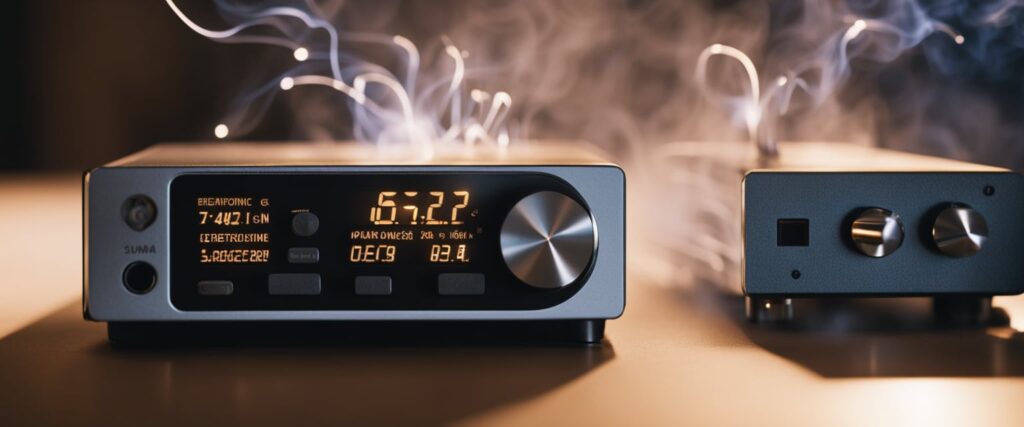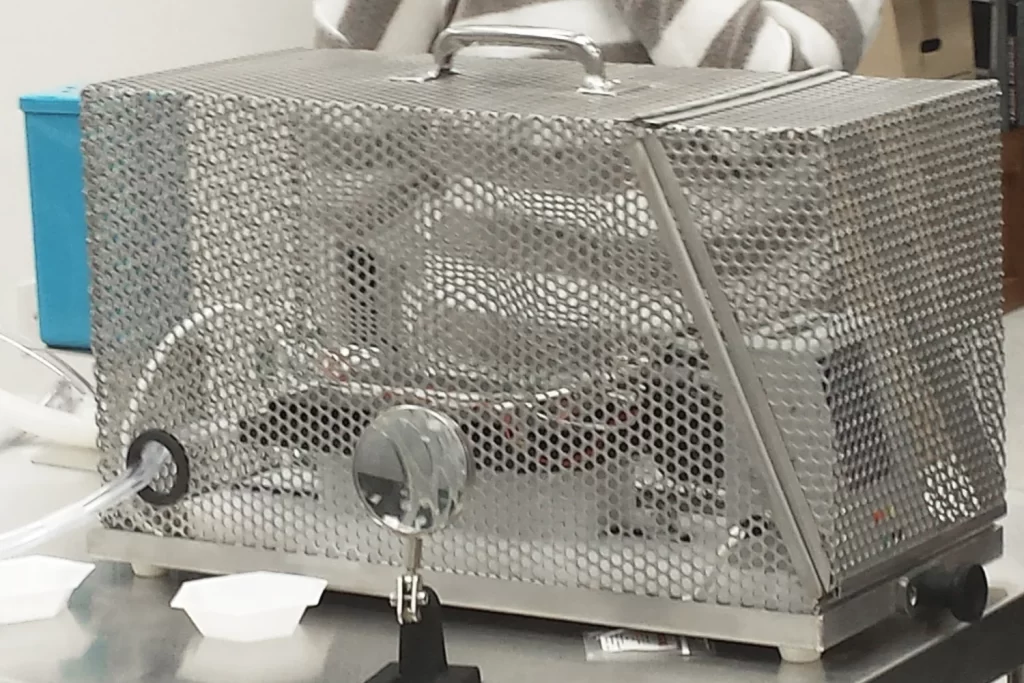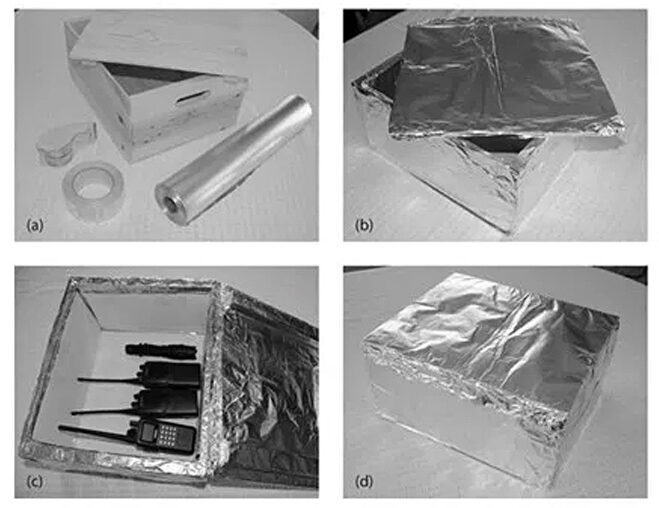As technology continues to advance, we are becoming more and more reliant on electronic devices for both personal and professional use. However, there is a looming threat that could render all of our devices useless in an instant: an electromagnetic pulse (EMP), that’s why learning how to EMP proof electronics is very important.
If an EMP were to occur, it could have catastrophic consequences, causing widespread power outages and rendering most of our electronic devices useless. However, there are steps that we can take to protect our electronics from an EMP and ensure that they continue to function in the event of such an occurrence. In this article, we will explore what an EMP is, how it can affect our electronics, and most importantly, how we can EMP proof our devices to keep them safe.

Understanding EMPs and Their Effects
The Science of Electromagnetic Pulses
An Electromagnetic Pulse (EMP) is a burst of electromagnetic radiation that can potentially damage and destroy electronic devices. EMPs can be caused by various sources such as a nuclear explosion, a solar flare, or a geomagnetic storm. EMPs are created when a sudden and intense burst of energy is released, causing a rapid change in the electromagnetic field. This sudden change in the electromagnetic field can induce a high voltage surge in electronic devices, leading to their malfunction or destruction.
Potential Sources of EMPs
There are two types of EMPs: natural and man-made. Natural EMPs are caused by solar flares or coronal mass ejections (CMEs) from the sun. These natural events can cause geomagnetic storms that can affect the Earth’s magnetic field. Man-made EMPs, on the other hand, are caused by nuclear explosions, EMP bombs, or other high-energy devices. These man-made EMPs can cause widespread damage to electronic devices and power grids.

Impacts on Electronic Devices
EMP events can have devastating effects on electronic devices. The high voltage surge induced by the electromagnetic field can cause electronic devices to malfunction or completely shut down. This can lead to the loss of important data, communication breakdowns, and other critical failures.
To protect electronic devices from EMPs, we can use Faraday cages or Faraday bags. These devices work by creating a conductive enclosure that blocks the electromagnetic field from reaching the electronic devices inside. Not all Faraday cages or bags are created equal, so make sure to use ones that are specifically designed for EMP protection.

Fundamentals of EMP Protection
Principles of Electromagnetic Shielding
When it comes to protecting electronics from an EMP, the key is to prevent the electromagnetic radiation from reaching the sensitive components inside the devices. Electromagnetic shielding can be achieved by using materials that are conductive and can absorb or deflect the radiation.
To understand how electromagnetic shielding works, we need to understand how EMPs are created. EMPs are created by a sudden burst of electromagnetic radiation, which creates a magnetic field that can induce a current in any conductive material. This current can then damage or destroy electronic devices.
To protect against EMPs, we need to use materials that can absorb or deflect the magnetic fields created by the radiation. Conductive materials like aluminum foil, steel, and mesh are effective at absorbing and deflecting magnetic fields.
Materials for EMP Shielding

The most effective way to protect electronics from an EMP is to use a Faraday cage. A Faraday cage is a conductive enclosure that can shield electronics from electromagnetic radiation.
To construct a Faraday cage, you need to use a conductive material like aluminum foil or steel. The material should be wrapped around the electronics, creating a complete enclosure that shields the devices from electromagnetic radiation. An insulating layer like cardboard can be used to separate the electronics from the conductive material.
It’s important to note that not all materials are effective at shielding against EMPs. For example, plastic and wood are not conductive and will not provide any protection against electromagnetic radiation.
DIY EMP Proofing Techniques
If you’re looking for ways to EMP-proof your electronics, there are a few DIY techniques that you can try. Here are some of the most effective methods:
Building a Faraday Cage

A Faraday cage is a container made of conductive material that can protect your electronics from an EMP. You can build a Faraday cage using common household items such as a metal box, tin foil, or aluminum foil. Simply wrap your devices in the foil and place them inside the metal box. Make sure the box is tightly sealed to prevent any gaps where an EMP could penetrate.
Using Common Household Items
If you don’t have access to a metal box or tin foil, there are other household items you can use to protect your electronics from an EMP. One option is to use a garbage can lined with cardboard and aluminum foil. Simply place your devices inside the can and seal the lid tightly. Another option is to use a microwave or oven as a makeshift Faraday cage. However, not all microwaves or ovens are effective at blocking EMPs, so make sure to do your research and test your device before relying on it for protection.
Commercial EMP Protection Solutions
As we mentioned earlier, protecting your electronics from an EMP can be challenging, but there are several commercial solutions available that can help. Here are some of the most common options:
EMP Shielding Products
EMP shielding products are designed to protect your electronics from the harmful effects of an EMP. These products range from surge protectors to Faraday bags to EMP-proof enclosures.
Surge protectors are a simple and affordable solution that can help protect your electronics from power surges caused by an EMP. They work by diverting excess voltage away from your devices, preventing damage from power spikes.
Faraday bags are another popular option. These bags are made from conductive materials that block electromagnetic radiation. Simply place your devices inside the bag, and they will be protected from the effects of an EMP.
Check out some of the most popular Faraday Bags here:
EMP-proof enclosures are the most robust option available. These enclosures are designed to completely block all electromagnetic radiation, providing the ultimate protection for your electronics. However, they can be expensive and may not be practical for all situations.
Testing and Certification
When choosing an EMP protection solution, make sure to look for products that have been tested and certified by reputable organizations. The EMP Commission is a government agency that tests and certifies EMP protection products. Look for products that have been certified by the EMP Commission to ensure that they will provide the protection you need.
Preparing for an EMP Event

In today’s world, electronics have become an integral part of our lives. From communication devices to kitchen appliances, we rely heavily on electronics to perform our daily activities. However, an EMP (Electromagnetic Pulse) event can pose a significant threat to our electronic devices. Therefore, it is essential to prepare for an EMP event to protect our essential electronics.
Emergency Preparedness Plans
As preppers, we must have an emergency preparedness plan in place to deal with an EMP event. We should have a stockpile of essential supplies such as food, water, and medical supplies that can last for at least three days. Additionally, we should have a backup power source such as a generator or solar panels to power our essential electronics during an EMP event.
Protecting Essential Electronics
To protect our essential electronics from an EMP event, we should take the following steps:
- Disconnect electronics: During an EMP event, disconnect our electronics from the electrical grid to prevent them from getting damaged.
- Wrap electronics in protective cloth: Wrapping our electronics in a protective cloth can provide an additional layer of protection against EMPs.
- Use EMP-proof electronics: Investing in EMP-proof electronics can be an effective way to protect our essential electronics. Vintage electronics are often more resistant to EMPs as they were built before the widespread use of microelectronics.
- Use surge protectors: Installing surge protectors can help protect our electronics from power surges caused by EMPs.
Some of the essential electronics that we should protect during an EMP event include radios, cell phones, glucometers, inverters, pumps, and dehydrators. These devices can be crucial for our survival during an emergency.

